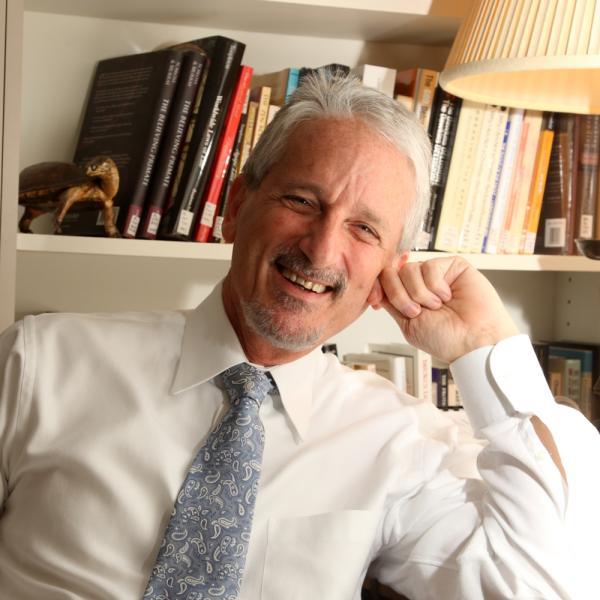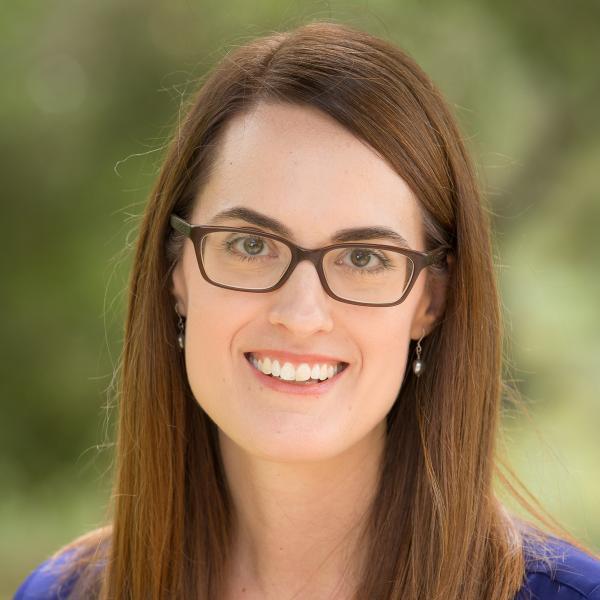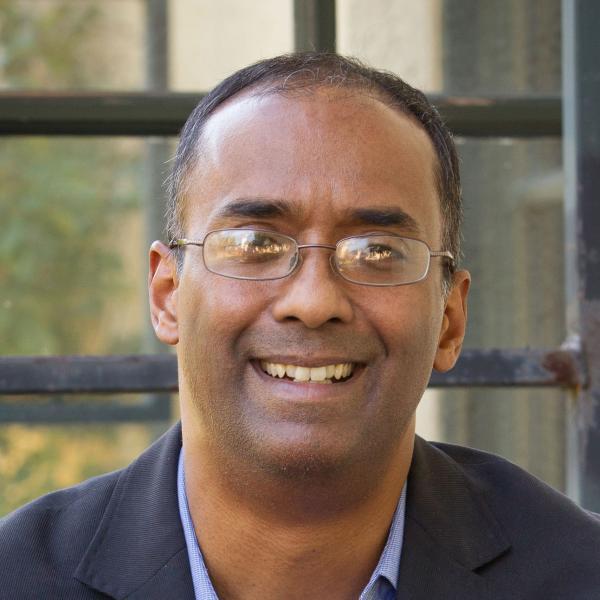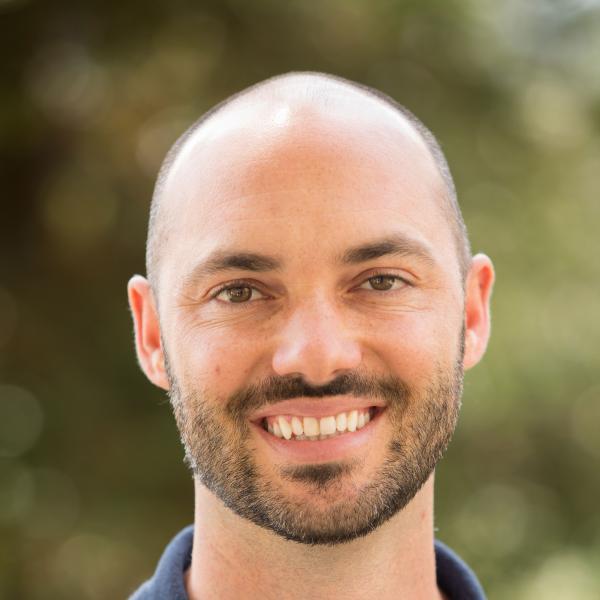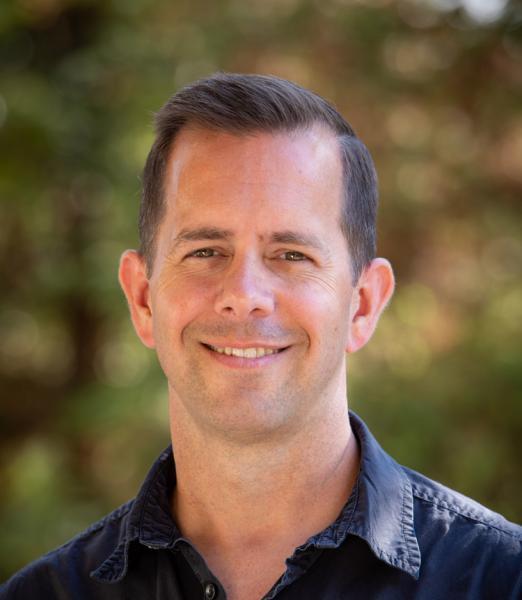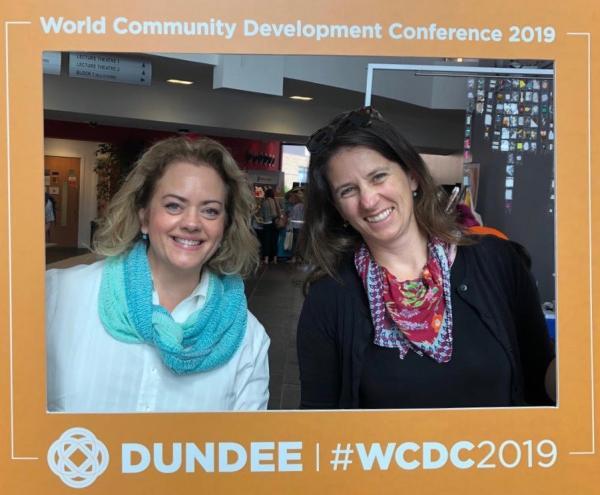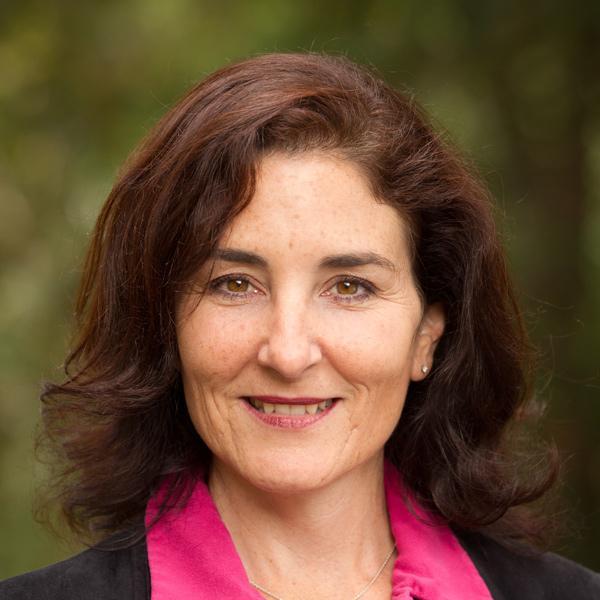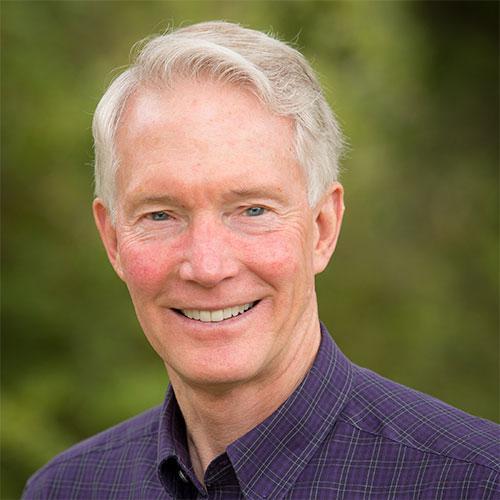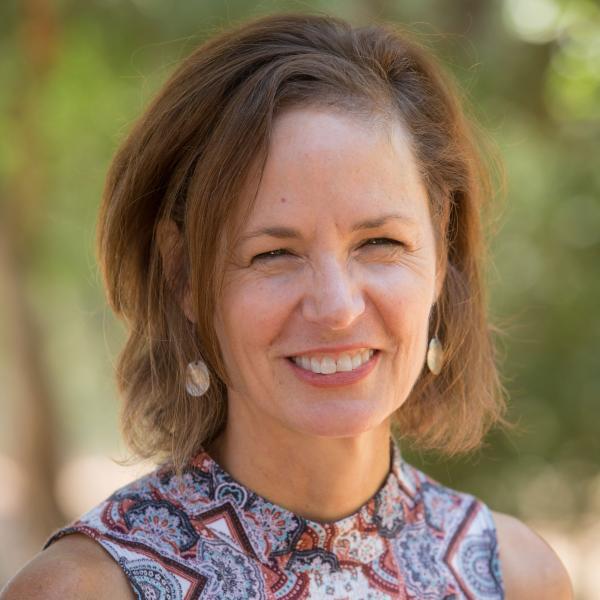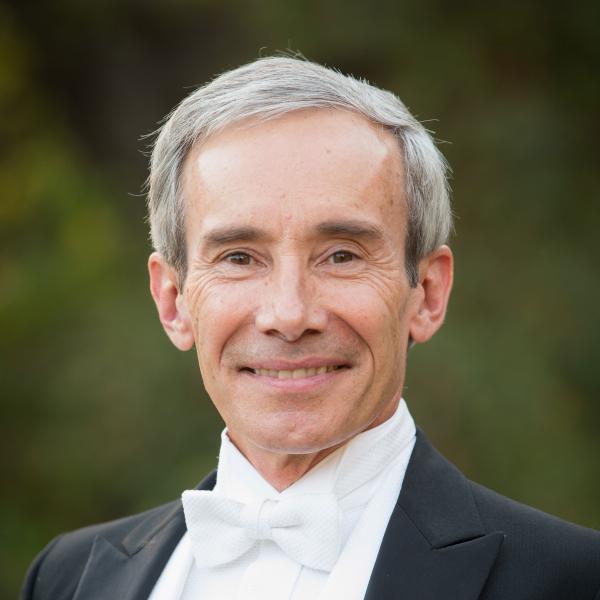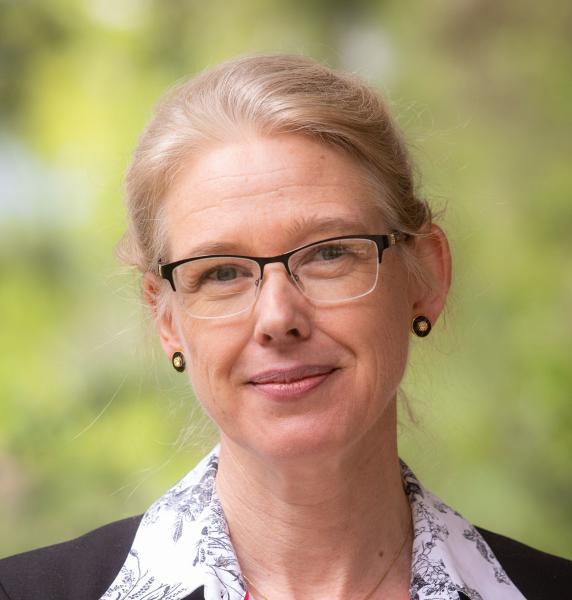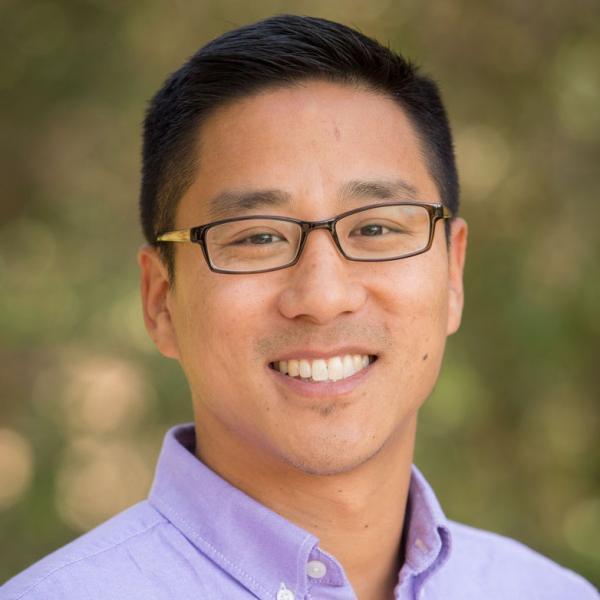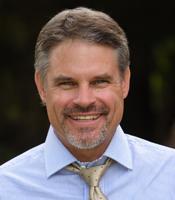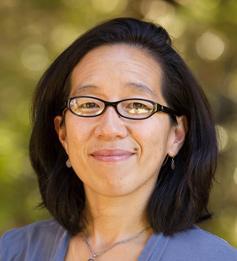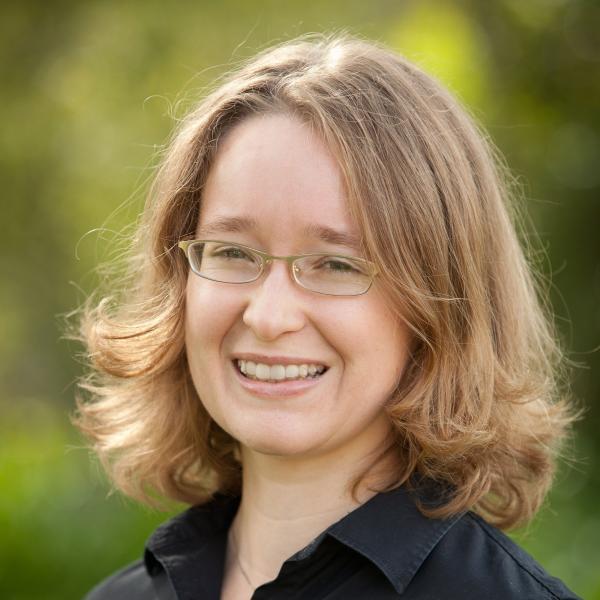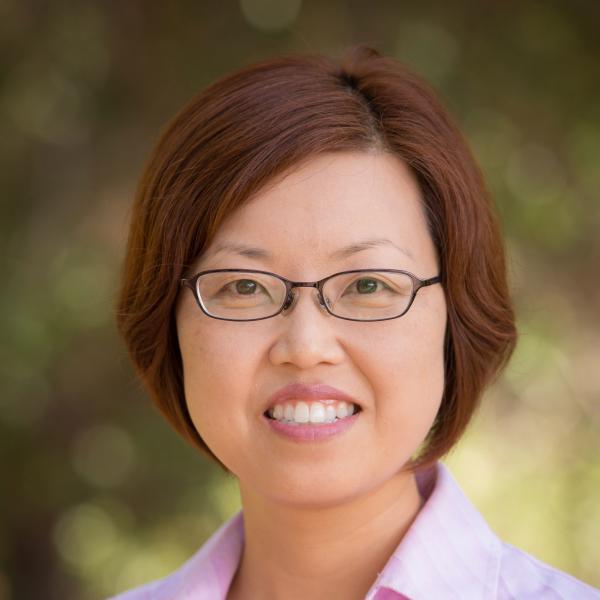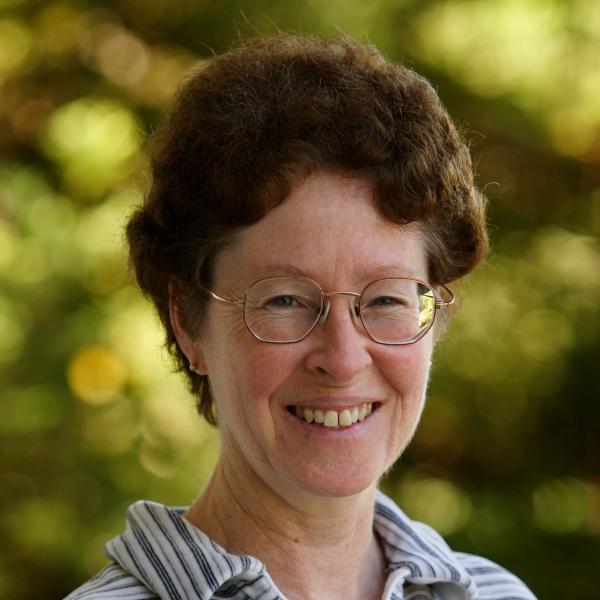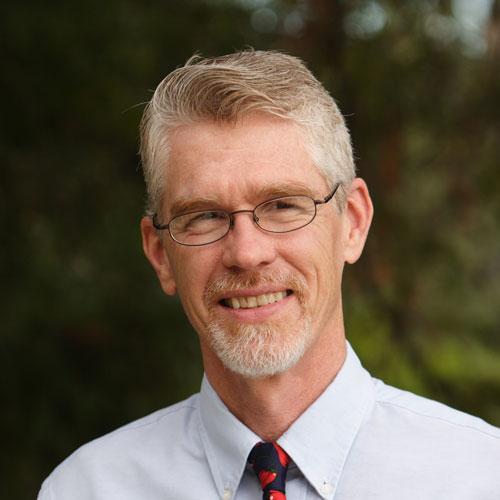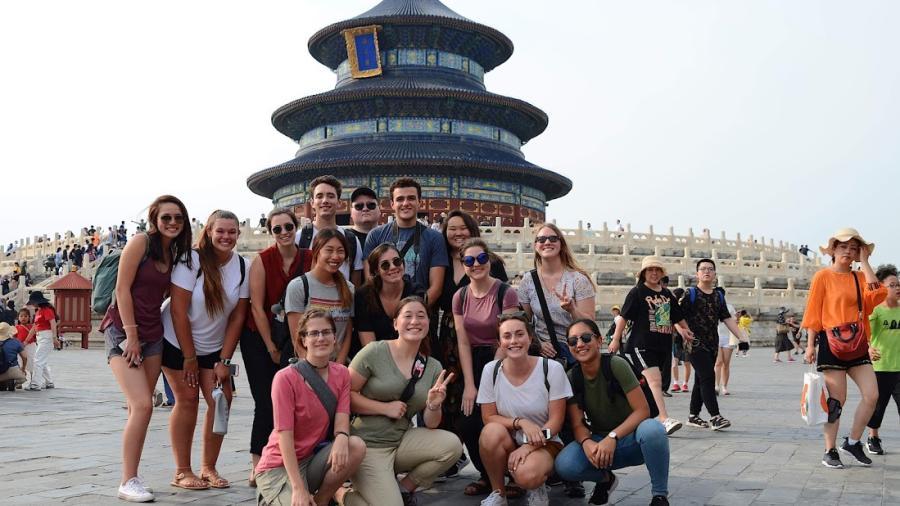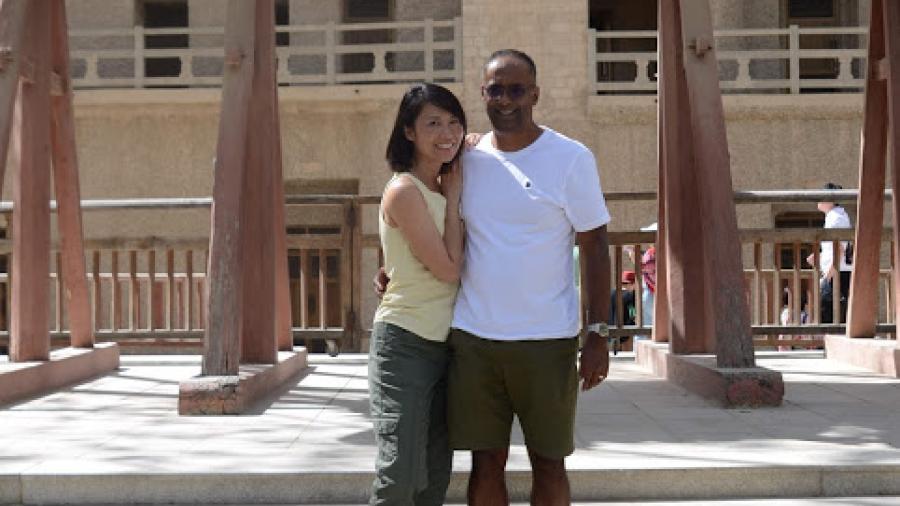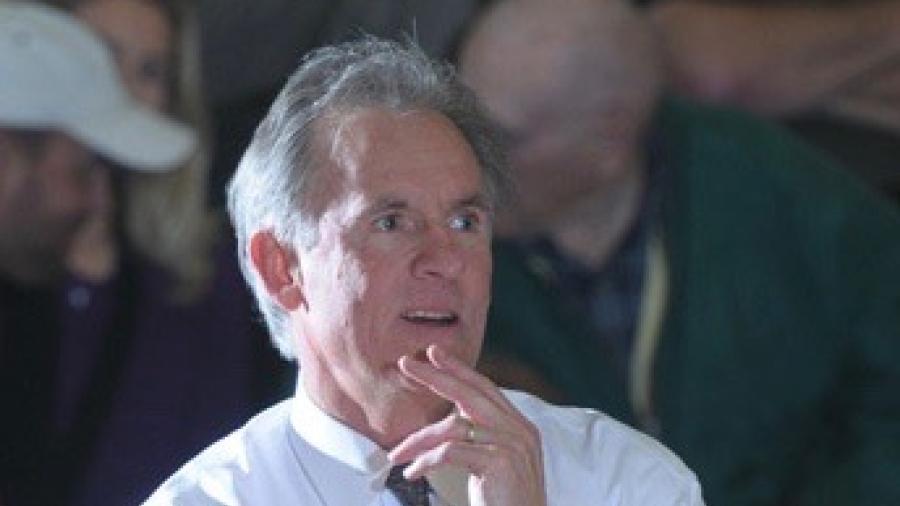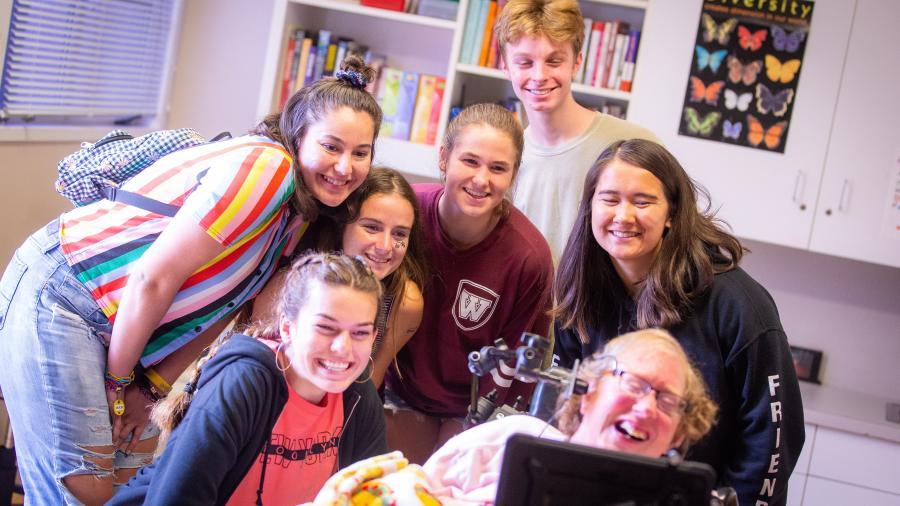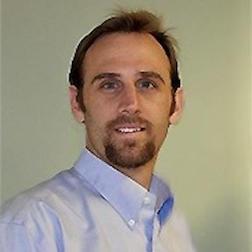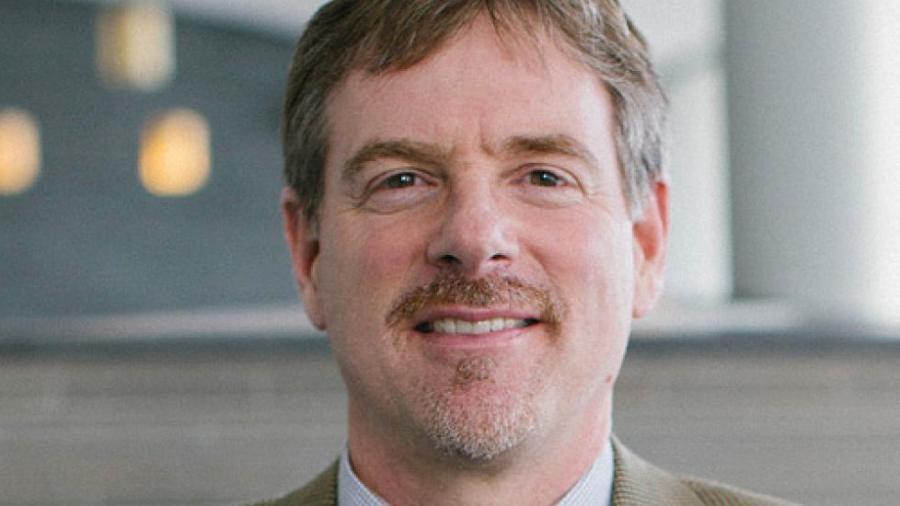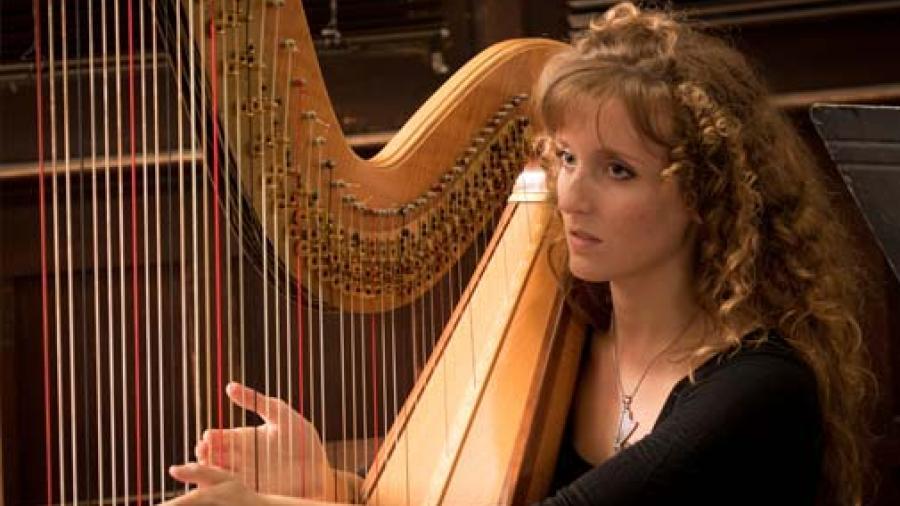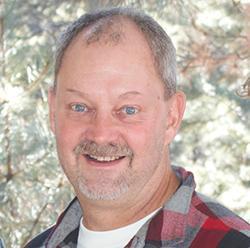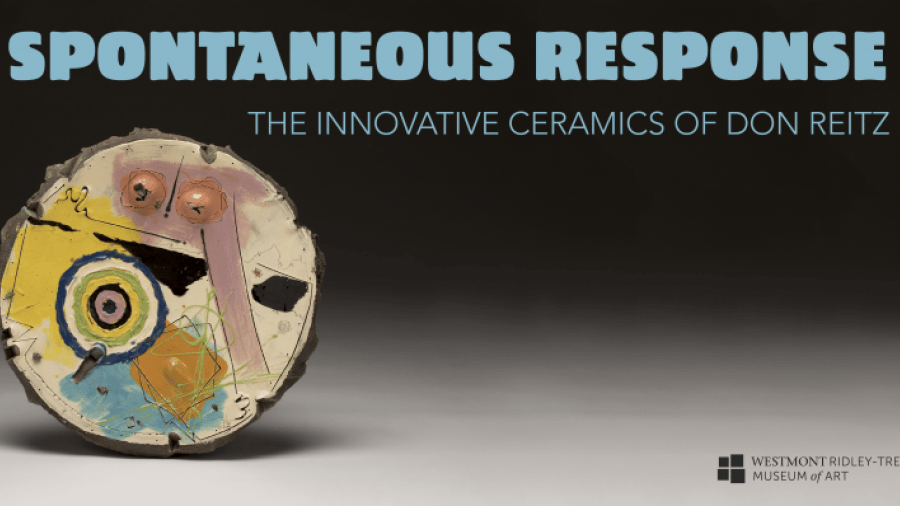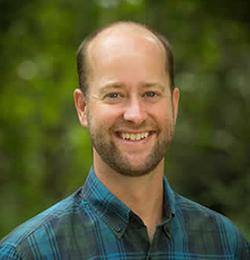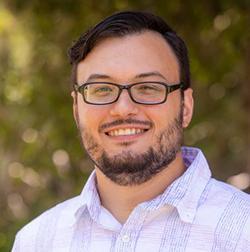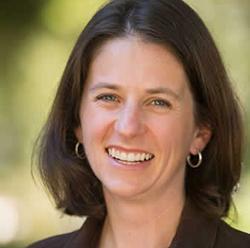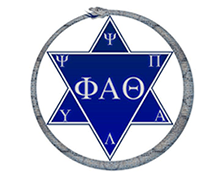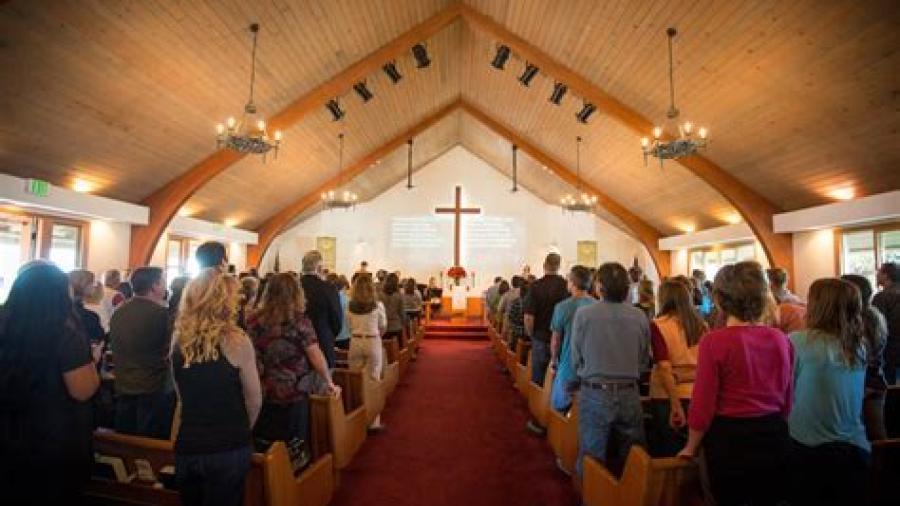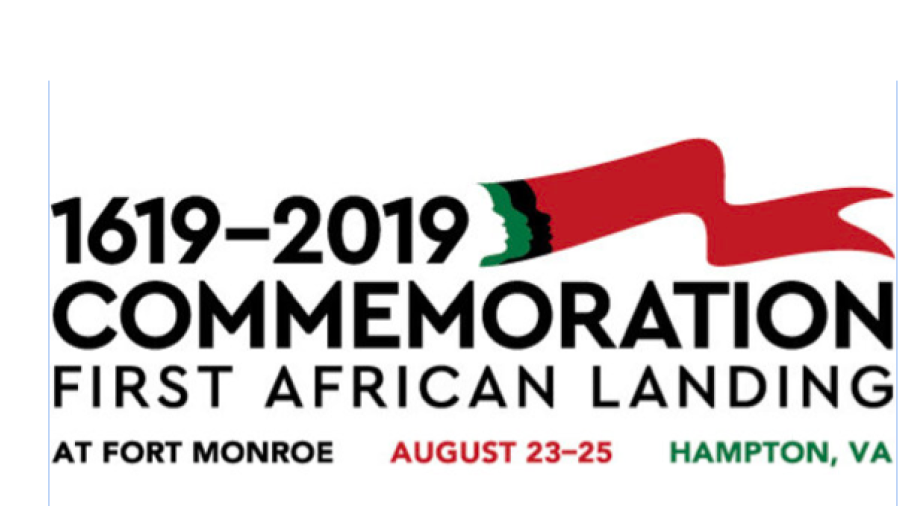September 2019
The good news this semester is that we had to stand in the sun a little longer for the First Walk. Many thanks to the Admissions staff and all of our colleagues who worked persistently to recruit the incoming class.
As always, September's report showcases the fruits of summer, and points out some of the early seedlings of the semester. The highlights here take us from Scotland to the Silk Road, and from scriptural translations to scroll paintings.
Each fall we hold a Celebration of Summer Research, accenting the scholarly work done by students in collaboration with faculty. This year we are blending the event with Homecoming and a Preview Day, so it will be a festival of sorts—alums, prospective students and families, faculty, staff, and current students gathering inside and outside of Winter Hall to connect with one another and survey the 17 student projects (October 11, 3:30 to 5:00). Everyone's welcome.
This report comes during a week when the United Nations held its Climate Action Summit and several faculty and students sponsored a "teach in" on climate change. The Economist just devoted its obituary page to the Oköjkull glacier in Iceland, declared dead after 800 years. In 2018 Antartica lost more than three trillion tons of ice. But 2018 also saw the largest annual increase in global renewable energy generation capacity ever, most notably in solar photovoltaic capabilities. The desire to pursue effective and timely remedies to climate issues is one of the reasons why our new Environmental Studies seminar has already attracted a full house. Some of these students, I hope, will become leaders in creation care for their generation.
UPDATES
WESTMONT IN ASIA
In August history professor Chandra Mallampalli and his wife Beverly Chen landed in Beijing with fifteen students participating in our second Westmont in Asia program. Chandra has spent many years researching the history of India, and Beverly speaks Mandarin, so both bring a wealth of knowledge to their leadership of the program. Students are exploring history, contemporary issues in Asia, and Mandarin, spending about half the semester in China and half in India. The program began with a two-week trip along the Silk Road. After about six weeks in Beijing, they will visit Nanjing and Shanghai, considering how China's historical past influences its current economic, political, and religious landscape.
In India, the group begins in Delhi and then heads to Chennai, Kerala, and Mumbai, finally ending in Goa. While in India, students will live in urban areas, rural villages, on college campuses, and in home stays. You can catch some glimpses of the group on Instagram: westmont_in_asia.
JOHN MOORE SELECTED TO NATIONAL BASKETBALL COACHES BOARD OF DIRECTORS
This summer Westmont basketball coach John Moore became only the second coach in NAIA history to be invited to serve on the National Association of Basketball Coaches (NABC) Board of Directors. He has been at the helm of Westmont’s program for the last 26 years. Over those years he has taken his teams to 13 NAIA National Tournaments and become the winningest basketball coach in Westmont’s history. As of the end of last season, John's Warrior teams had won 532 games.
John has already been a member of the NAIA Men’s Basketball Ratings Oversight Committee, served as the past president of the NAIA Men's Basketball Coaches Association, worked with USA Basketball, and coached the junior national teams of Bangladesh and Sudan. After this latest appointment, John remarked: “I think it’s an incredible honor for me, but it’s an incredible honor for our coaching staff, for Westmont basketball, and for Westmont College as a whole.”
CURIOSITY AND FAITHFULNESS: ANOTHER MEMORABLE YEAR FOR TRAILHEAD
Trailhead: Seeking God’s Call—the summer program guided by the Gaede Institute for the Liberal Arts—saw its largest enrollment this year as 58 high school students from around the country came to campus to learn, fellowship, and discern God’s promptings in their lives. "The more we do this," Chris Hoeckley reflects, "the more we realize that Trailhead is really a week-long seminar in listening—listening to others, listening to one's self, and listening for God."
Eighteen faculty and staff offered integrative learning experiences, including four new day-long units: an exploration with Holly Beers of how God works through ordinary Christians' lives; a visit to PathPoint Santa Barbara to consider with Helen Rhee and Chris Milner how people with disabilities reflect the image of God (photo); a celebration of musical beauty in Christian practice with Grey Brothers; and deliberation of historical and contemporary issues with Rachel Winslow. Christen Foell remarks that "our team of undergraduate student mentors also amazed us with their growth in these three weeks. We really saw them flourish as they modeled attentive curiosity and faithfulness to these young people." Trailhead alums are becoming a significant presence at Westmont; we have on campus this semester 22 student participants, and they have formed a couple Capax Dei groups.
BIOMECHANIST ADAM GOODWORTH LEADS TWO MAJOR GRANTS
New Kinesiology professor Adam Goodworth has brought two large federal grants totaling more than half a million dollars with him to Westmont.
A $350K Department of Defense grant, awarded this last summer, focuses on limiting falls in prosthetic users with low mobility. The project aims to evaluate how microprocessor artificial knees impact adults with a trans-femoral (above knee) amputation. A $300K, three-year National Science Foundation project focuses on applying engineering control systems to improve posture in children and teens with moderate-to-severe cerebral palsy. Adam will be dedicating time during the academic year and summer to both of these projects and looks forward to involving Westmont students in the work.
WESTMONT IN SAN FRANCISCO DIRECTOR RELEASES SHREWD SAMARITAN
Bruce Wydick, who is now heading up our Westmont in San Francisco program, has been speaking at many colleges and universities about his new book Shrewd Samaritan: Faith, Economics, and the Road to Loving Our Global Neighbors. The book sets its theological frame by recounting both the beloved Parable of the Good Samaritan (Luke 10:25-37) and the more enigmatic Parable of the Shrewd Manager (Luke 16:1-9).
A scholar of economics, Bruce devotes early sections of the book to describing the sources of poverty in our world as well as the causes of inequality in rich countries. An experienced evaluator of relief programs, he describes his own rating system for assessing the effectiveness of interventions. The book assesses what works well and what is far less effective in poverty reduction, education, and the advancement of health. (What works? International child sponsorship, deworming treatments, and conditional-cash transfers. What doesn't work as well? Shoe and clothing donations, fair-trade coffee, and free laptops for school children.) The book closes with advice about the "microeconomic interventions" that individuals can take as well as the "big picture" economic policies that will promote human flourishing.
NASM REVIEW SALUTES MUSIC AT WESTMONT
Over the summer we received the official word from the National Association of Schools of Music (NASM) regarding our recent accreditation review. NASM officially gave approval to the new Bachelor of Music degree, and also voted to continue accreditation for the program.
As is common, they raised a few questions that they wish for us to address in the coming year, mostly related to long-term planning. But the review team had mostly substantial praise for the program and its people. They specifically cited Michael Shasberger's leadership, the "engaged and dedicated faculty," our "focused and talented students," the "strong, intentional touring program," as well as the "high-quality of the artistic ensembles." They were especially impressed by the strong participation of non-music majors in the music groups, the "exceptional retention" of our music performers, and the program's "high regard in the community."
DAN JENSEN JOINS WESTMONT AS ENGINEERING ADJUNCT PROFESSOR AND CONSULTANT
I am pleased that Dan Jensen, a former professor of engineering at the Air Force Academy, has joined Westmont as an adjunct professor and as a special consultant as we develop the engineering program. In his twenty-year career with the Air Force Academy, he developed numerous courses in engineering and mechanical design systems. Dan will contribute to some of the early engineering courses as a guest professor and advise us about curriculum, facilities, and accreditation.
Currently a resident of Colorado, Dan completed his doctorate in mechanical engineering from the University of Colorado at Boulder, and is a senior fellow with Singapore University Technology and Design and with MIT. He has received over six million dollars in grants, including more than two million from the National Science Foundation.
CHRIS RUPP CURATES SHOW OF INNOVATIVE CERAMICS
Much of the beauty of these ceramics, according to Chris Rupp, comes from the smoke and ash. On a brief tour of the show he has curated for the Westmont-Ridley Tree Museum of Art, Chris told me how Don Reitz—former professor and artist at the University of Wisconsin—experimented with different firing techniques. In his later years, Reitz often placed his works multiple times in wood-fired kilns and let the ash fuse into the clay to give the pieces subtle new shades. Earlier in his career, Reitz had earned the name "Mr. Salt" for adapting the industrial process of salt firing into an aesthetic practice. Instead of glazing his ceramics, Reitz relied on the salt firing to give his work very distinctive colors and textures and to preserve more of the artist's touch on the clay.
According to Chris, Reitz was one of "the greatest generation of ceramic artists." In his essay for the exhibit, art historian Glenn Adamson comments on the "high velocity" and "supreme confidence" with which Reitz made his "signature moves," such as stretched handles, torn edges, and spills of glaze. All that gave his work an "astonishing suddenness" that somehow conveyed his deep experience. There's a good reason Chris calls the show "Spontaneous Response."
For all of Reitz's bold and athletic style, some of his most striking work was produced after his mobility was limited by a severe car accident in 1982. During his months of hospitalization and recovery, Reitz exchanged drawings and letters with his five-year-old niece Sara, who was struggling with cancer at that time. When he finally returned to the studio, Reitz produced many two-dimensional surfaces, colorfully adorned with images inspired by Sara's drawings. The works bring together grown-up anxieties and aspirations and childlike joys and fears. As Chris showed me Reitz's "Sara Series," he called attention to the handprint on several of these pieces. You can decide whether you see an adult's sure hand of care—or the muddy remnant of a child's playful afternoon.
FACULTY-STUDENT COLLABORATIONS
Many of our faculty colleagues keep active research collaborations with students, and during the past summer several saw print or were presented at conferences. A paper by Tim Van Haitsma (photo), entitled "An Examination of Short-Term Mental Conditioning or Mindfulness Training on Physiological, Psychological, and Performance Outcomes during a Cycling Task," was published by the International Journal of Sports Science. Many of his students appeared as co-authors: Danielle Costa, Amanda DeLaura, Sarah McGough, Tyler Salinas, and Nicholas Swider .
Working with SBCC colleague and Westmont adjunct Michael Gonella, Michael Everest published an article in Ethnobiology Letters, with Holly Bowler and Joshua Waschak contributing as co-authors. The article explores the question "How Toxic is Milkweed When Harvested and Cooked According to Myaamic Tradition?"
Appearing at the 22nd biennial conference of the Association of Christians in the Mathematical Sciences, Russ Howell presented a paper on "When the Fundamental Theorem of Algebra Goes Awry." The paper was part of a team effort that includes former Mathematics and Computer Science major Kyle Hansen, who has begun his Ph.D. studies in Mathematics this fall at UCSB. Russ has also been selected as the editor of the conference proceedings, which are slated to be published in May 2020.
RECENT GRANTS
BRANDON HAINES |
RACHEL WINSLOW |
|
Brandon Haines has been awarded 26,600 node hours on the Stampede2 super-computer at the Texas Advanced Computing Center (TACC). The center is located at the University of Texas at Austin. The grant comes from the National Science Foundation's Extreme Science and Engineering Discovery Environment (XSEDE) program. XSEDE will enable scientists, engineers, and educators to exploit powerful digital services and social networking environments to support the exchange of knowledge and advance understanding across many domains. The computer time awarded to Brandon will support his research with undergraduate students at Westmont. His work explores some new aspects of computational chemistry, which is Brandon's particular focus and expertise. The project will investigate how chemical reactions take place on the molecular level and consider strategies for how they can be controlled. The endeavor is called an "Investigation of Enantioselectivity, Stereo-Electronic Effects, and New Ligands in Transition-Metal Catalysis."
|
Rachel Winslow and colleagues have recently secured two major grants to support projects at Westmont Downtown. Alex Nizet played a key role in pursuing the gifts. The Westmont Initiative for Public Dialogue and Deliberation (WIPDD) received a $50,000 gift to expand its work. Co-directed by Deborah Dunn and Rachel, WIPDD hosts community forums and trains student facilitators to work with the Santa Barbara community to address local problems. The gift allowed the initiative to hire part-time project coordinator, Jordan Baldridge. This summer, Don Patterson and Rachel—working with Enrico Manlapig and Ed Song—launched WestHUB: an interdisciplinary incubator for students who want to create a venture, organization, or movement. Housed at Westmont Downtown, WestHUB (part of the Center for Technology, Creativity, and Moral Imagination) offers its student partners collaborative workspace, seed funding, targeted mentorships, a one-unit seminar called “Redemptive Entrepreneurship,” and community networks. WestHUB just received a $100,000 gift that will help to fund student fellowships, facility resources, educational programming, and support staff.
|
HISTORY MAJOR EARNS PRIZE AT HONOR SOCIETY
Last spring, Rick Pointer, chair of the History Department, took senior history majors Jayne Avendano, Jack Demlow, and Gabe Grabowski to the Southern California Regional Conference of Phi Alpha Theta, the national history honor society, where they presented papers from their work last fall in the department's Senior Research Seminar.
Jack Demlow's paper, "A Decided Testimony: Congregationalist Arguments Against the Mexican-American War," was awarded the second-place prize among the roughly 50 undergraduate papers presented at the conference.
WESTMONT FACULTY HELP DRAFT RESOLUTIONS ON RACISM AND POVERTY FOR THE FREE METHODIST CHURCH
Over the past year, several Westmont faculty helped to draft resolutions seeking to add language regarding racism and poverty to the Free Methodist Church in the United States’ Book of Discipline, the official constitution of the denomination, articulating its history, theology, and practice. These resolutions were adopted at the denomination’s quadrennial General Conference meeting this past July. Edward Song, Felicia Song, and Sameer Yadav drafted a statement on race and racism. The resolution arose out of conversations of a small group that includes Chandra Mallampalli, Kya Mangrum, and Don Patterson. Helen Rhee and Kelly Soifer worked on a separate statement regarding poverty. Those two resolutions were combined, and unanimously adopted from the floor by the delegates at General Conference. They will be incorporated into the 2019 Book of Discipline in a section on the "Dignity and Worth of Persons."
SOME QUICK NOTES
Lydia Grenko, a recent Westmont alum, has assumed the laboratory coordinator role for the Psychology Department. She has previously conducted neuropsychological evaluations for older adults in her work with the Pacific Neuroscience Medical Group and has been a social services assistant for Samarkand. Nick Taylor, also a Westmont graduate, fills the laboratory coordinator post for the Biology Department. He has done synthetic chemical research at Westmont and worked with facial recognition technology with Neural Psychology Research in Irvine.
Carmel Saad (photo) has been asked by the University of California presidents to offer some anti-bias training for UC and CSU campuses.
Alister Chapman has been selected as the vice chair of the Academic Senate. Marianne Robins has been elected as the chair of the Faculty Personnel Committee.
Jim Taylor has agreed to serve as the Lead Assessment Specialist for the Critical Thinking ILO ("Institutional Learning Outcome"). He is planning several "brown bag lunches" to encourage new strategies for promoting students' critical thinking skills.
Angela D’Amour and I have asked Enrico Manlapig and the students in his Decision Lab to help us assess the Serving Society GE requirement. Over the years there have been some shifts and changes in what has been allowed for credit and in how certain courses are approached. We also have more service opportunities than we did when the requirement came into being. So we want to revisit the requirement and determine how to breathe new life into it.
Sonya Welch has developed a revised list of the preferred majors for incoming students. Economics and Business tops the list at 72, followed by Biology (60), Psychology (51), Kinesiology (47), Communication Studies (35), and Political Science (19). Engineering/Engineering-Physics has 18; Data Analytics has 8, the same as Computer Science.
THINKING GLOBALLY, 1619
In the late afternoon on August 25 of this year, the bells in many American cities rang for four minutes—a somber reminder that the first ship carrying Africans to the British colonies arrived at the Jamestown settlement exactly four centuries earlier. This fall's Focus Week and one Faculty Forum will include reflections on the anniversary and its resonances today. Several departments and offices—English, History, the Campus Pastor, and Student Life—are collaborating on the events.
Human trafficking, now as much as ever, relies on global networks, though often masked to local eyes, including many forms of servitude in our own county. The story of Jamestown's African residents has long been masked in popular histories of American beginnings, and has certainly been overshadowed by other tales of arrival, from the Mayflower to Ellis Island. The 20 or so captives set ashore at Jamestown were among several hundred Kimbundu-speaking people from West Africa who had been seized by or sold to Portuguese traders. Marched to the sea, they were boarded onto a ship named for John the Baptist and destined for Veracruz in New Spain. The fierce passage had an all-too-common cost: more than a third perished on the Atlantic. While the Portuguese vessel roamed off the Yucatan Peninsula, it was raided by two English privateers, and several passengers were taken with the pillage. One of the English ships, the White Lion, eventually dropped anchor at Comfort Point (now Fort Monroe) at the mouth of the James River, and the captain exchanged captives for food. According to John Rolfe (the husband of the recently deceased Pocahontas), some "20 and odd" Africans were purchased by Virginia's governor and trading merchant "at the best and easiest rates they could."
The landing of the White Lion is far from the beginning of transatlantic slavery: over 250,000 enslaved people had been shipped from Africa to the Caribbean and South America in the previous century. But it reveals that stories of our national origins—about the foundations of American civilization and democracy—are enmeshed with the legacy of human trafficking. One stark reality is that slavery became increasingly entrenched in American law after these early British settlements. Records about the first Africans in Jamestown are scarce, though it appears that at least some were treated as indentured servants and a few may have eventually been granted land. They may well have been baptized—a forced but conventional practice by Spanish and Portuguese captors. At that time, the English tended not to treat Christians as slaves, but Jamestown's records also tend not to list the Africans' ages and marital status, both commonly used when setting terms of indenture. By 1640 a court in Virginia sentenced one African to life-long servitude on the basis of religion, and in time American courts began denying freedom solely on the basis of race.
For all of the troubling shadows and effects of the past, marking the anniversary has also been an occasion for many churches, colleges, and organizations to recognize the beginnings and traditions of African-American cultures. The commemoration in Virginia was officially called the "First African Landing," and it offered not only "cleansing ceremonies" for past injustices but also exhibitions of art, music, and ideas. Several HBCU institutions held "Angela" events, named in honor of one Jamestown African with a recorded name, albeit an anglicized one. Those events often accented African-American contributions to Christian history. On the eve of the anniversary, pastors and Christian leaders from many ethnic groups signed a statement lamenting the path from Jamestown to Charlottesville, but affirming their own journeys of Christian hope. "Early in the Jesus movement, well before it was called Christianity," they wrote, "one of the defining issues that Christ's followers faced was how to incorporate and include others, specifically Gentiles." Remembering 1619 challenges us not only to confront the origins and repercussions of slavery in the country, but also to heed the origins and ideals of our faith.
Provost's Report Archives
2019
|
2018 |
2017 |
2016 |
2015 |
2014 |
